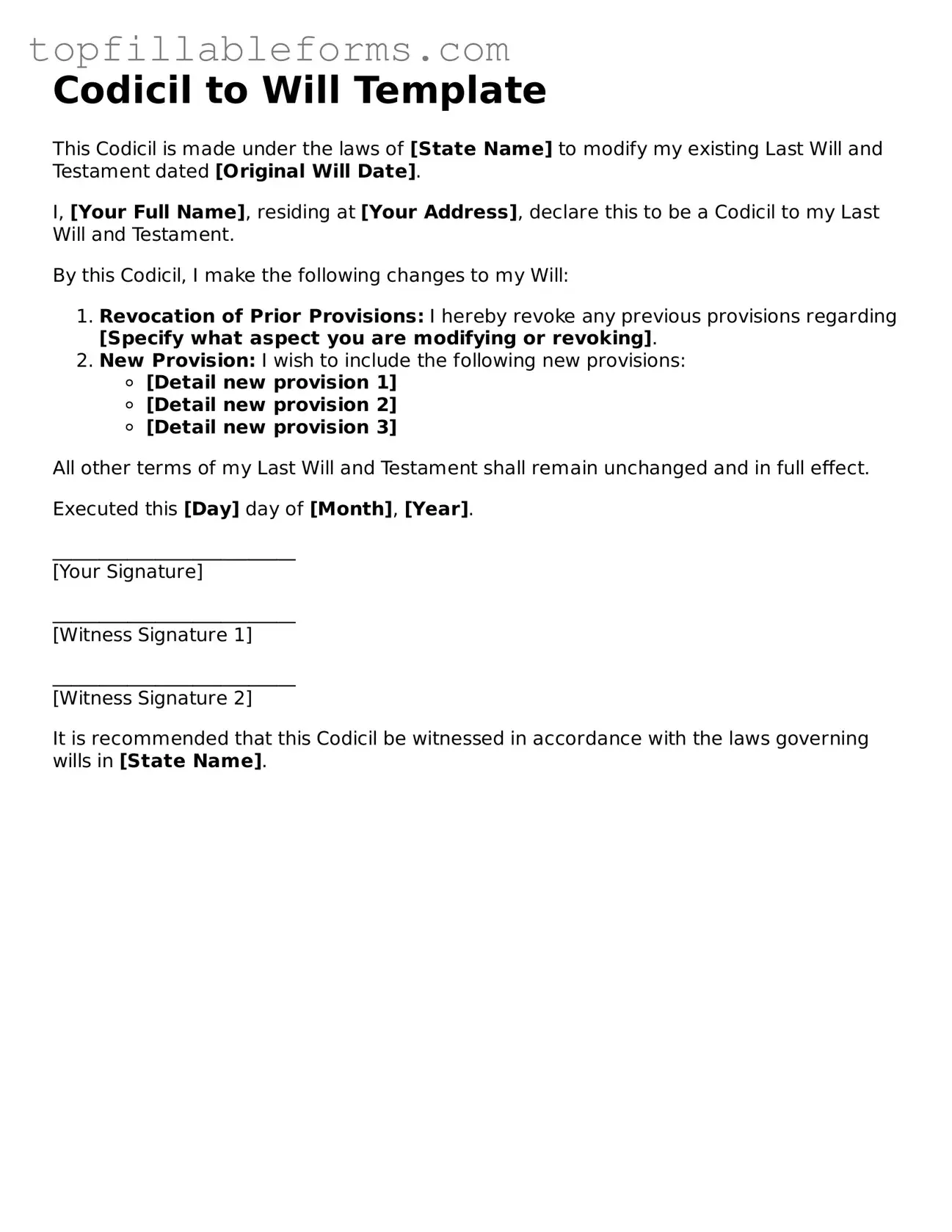Free Codicil to Will Form
A Codicil to Will form serves as a legal document that allows individuals to make amendments or additions to their existing wills without the need to create an entirely new one. This form can be crucial for ensuring that your final wishes are accurately reflected, especially as circumstances in life change. Understanding how to properly utilize a codicil can provide peace of mind and clarity for both you and your loved ones.
Open Codicil to Will Editor Here
